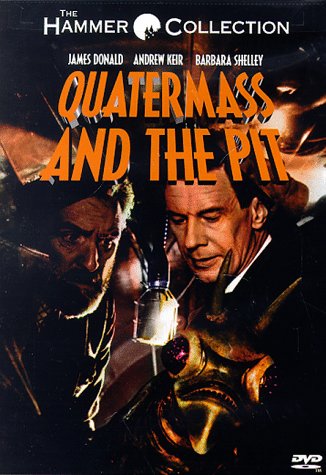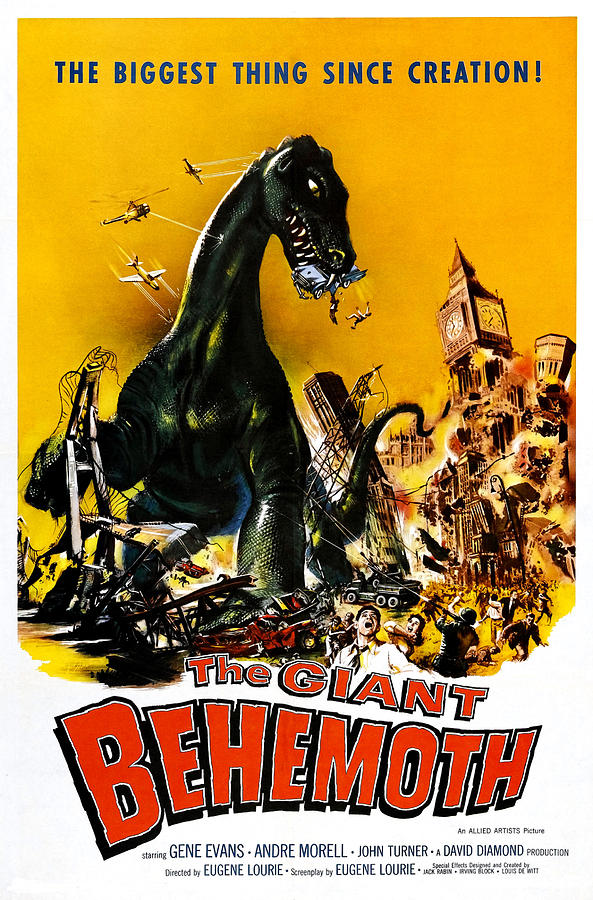
The 210-minute Quatermass and the Pit DVD offers a richer viewing experience than the cinematic version, chopped down to just 97 minutes.
This is the 170th in my series of Forgotten, Obscure or Neglected Films
As I mentioned last week, Quatermass and the Pit was one of the new films I recently picked up. This is the six episode serial that ran on the BBC from December 1958 to January 1959. Each episode was 35 minutes, making the DVD roughly 210 minutes. The 1967 film version, released as Five Million Years to Earth in the United States, ran 97 minutes, less than half the running time of the original production.
As usual, I do have a story about this film. As a freshman at the University of Texas I was attracted to an interesting grad student who studied Anthropology and worked with the monkeys at UT. We hit it off well and were an item for a fairly long time. I kept in touch with her even after she transferred out to University of Georgia and worked with the monkeys there on her way to a doctorate in psychology.
One night we were talking and she was telling me about the worst film she had ever seen in her life. (You see where this is going.) It was Five Million Years to Earth.
The film features a rocket buried in a Knightsbridge neighborhood. Digging for a new development unearths some unusual skulls and scientists are brought in, including Dr. Matthew Roney (Cec Linder). Roney is pressured to wrap up his investigation fast, but he is not having it. He appeals to his friend Prof. Bernard Quatermass (Andre Morell) who has been working with the British rocketry group. He has just gotten a military co-commander Colonel Breen (Anthony Bushell) who is a no-nonsense, military, anything-we-can-do-to-win sort of guy. Roney is assisted by a female scientist Barbara Judd (Christine Finn).
Breen and Quatermass go to the worksite to see if the object might be an unexploded bomb. Soon weird things happen and the investigators learn of odd reports from the neighborhood going back 30 years or so. The dig further and discover that the weird things go back centuries.
The rocket is made of an odd material that resists analysis. Roney suggests that the unearthed skulls represent an ape-like man with a developed brain who may be up to five million years old (hence the film title).
Insect-like creatures are found inside the ship and these are suspected of being perhaps Martian in origin. Colonel Breen is having none of this, even though he has been affected by something from the ship. He is convinced it is a leftover German propaganda stunt from WWII. Needless to say, he is proven very wrong.
The film has lots of ins and outs and conflicts between the scientists and the military, which result in multiple deaths of soldiers and civilians. One worker even has symptoms of demonic possession.
At two and a half hours, there is room to expound on a lot of these subjects. In the 97 minute film version, much gets glossed over, hence my former girlfriend’s distaste for the film. She hated the ending, which I enjoyed in both versions. The film is done in color while the BBC show is presented in a stirring black and white. And being 1958, the special effects are less than stellar. The BBC has never been noted for its effects budgets and certainly not in the period four-plus years before Dr. Who.
Now, prior to Dr. Who, screenwriter Nigel Kneale was Britain’s premier science fiction TV writer. Prior to Quatermass and the Pit he had done a version of 1984 and two earlier Quatermass teleplays – The Quatermass Experiment with Reginald Tate in the Quatermass role (also filmed under that title and The Creeping Unknown with Brian Donlevy) and Quatermass II with John Robinson in the title role, since Tate had unfortunately died. Quatermass II was later filmed as Enemy From Space with Brian Donlevy repeating the role. Five Million Years to Earth featured Andrew Keir in the role. Later John Mills would take the role in Quatermass.
The tale gets pretty wacky by the end but I loved it. My former girlfriend Jen hated it. Everyone’s got their own opinion. Go for the longer version. Things are a little clearer in their motivation and explanations. As usual, your mileage may vary.
Series organizer Todd Mason host Tuesday Forgotten Film reviews at his own blog and posts a complete list of participating blogs.

